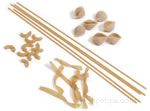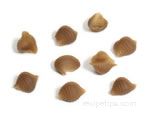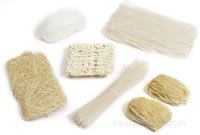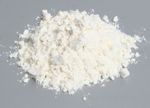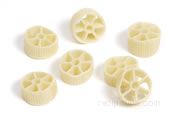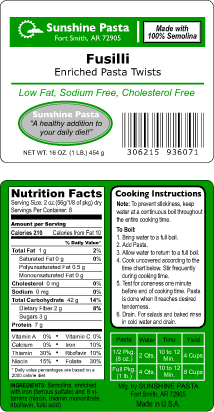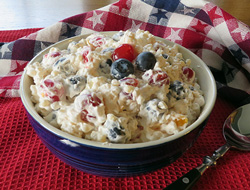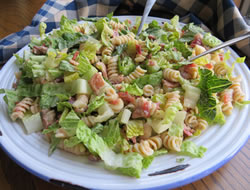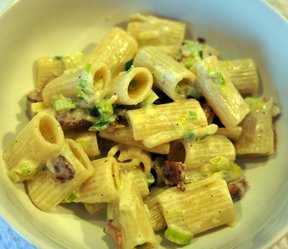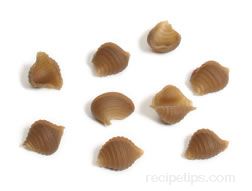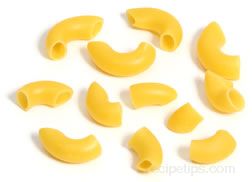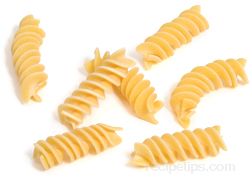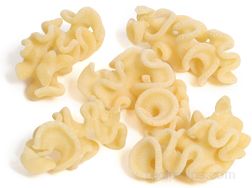|
Dried Pasta
Dried pasta, which is generally factory made, is pasta that has gone through a drying process that completely dries the pasta before it is packaged. It is available in hundreds of sizes and shapes and when dried pasta is cooked, it swells to almost twice its size. It is generally made from water and semolina flour, which is ground from durum wheat. Dried pasta will keep indefinitely when stored on in a dry area out of the direct sunlight.
Dried pasta is more convenient to use and it is available in a larger assortment of sizes and shapes than fresh or homemade. It is also becoming available in a variety of flavors. When dried pasta is cooked, it holds its shape better than fresh or homemade pasta so it makes a good choice for salads and casseroles. It also works well with heavy and chunky sauces.
Fresh Pasta
Fresh pasta has not been completely dried. It is more tender and chewy than dried pasta and requires a shorter cooking time. Basic fresh pasta is made from semolina or all-purpose flour, eggs and water. The eggs brighten the color of the pasta. You should not purchase fresh pasta too far in advance of using because it has a short shelf life. It can be stored in the refrigerator for up to five days from the day it was made. The sooner it is used the better the quality will be. Fresh pasta is also available in frozen form, which would allow it to be stored for a longer period of time. It is available, both frozen and unfrozen, in most food stores.
Fresh pasta cannot be found in the large assortment of sizes and shapes that dried pasta is available. It is most often found as ribbon type pastas, such as fettuccine, lasagne, linguine, pappardelle, riginette, tagliatelle, and trenette. It is also found in a variety of stuffed pastas, such as agnolotti, ravioli and tortellini. Fresh pasta is made daily in Italian specialty stores, where you can be sure you are purchasing the freshest pasta possible. Fresh pasta is fairly absorbent so it is generally served with a lighter, more delicate sauce. It is also available in different flavors and colors.
Homemade Pasta
Homemade pasta is basically the same as fresh pasta except that it is made at home, not commercially.. Homemade pasta is most often made with all-purpose flour because dough made with semolina flour is more difficult to handle. The limitations in making pasta are determined by the capabilities of the pasta machine or tools used to cut the pasta shapes or strands by hand. There are a great variety of flavoring agents that can be used to create different flavors and colors. You must be careful that whatever you add as a flavoring agent will not make the pasta dough difficult to work with or difficult to put through the pasta machine. When making stuffed pasta you can also experiment with many different fillings.
Homemade pasta requires more time and effort so you must be sure you have the time to prepare it before deciding to use it instead of purchasing dried or fresh. Many people feel it is worth the extra effort for the taste of homemade pasta. The pasta should be used immediately or it can be dried slightly and then stored in the refrigerator for up to five days or frozen for longer storage. It can also be dried completely and then stored unrefrigerated in a cool dry place for a couple of months. Homemade pasta, like fresh pasta, is generally served with a lighter sauce. Because of their tenderness, homemade and fresh pasta do not work well for salads or casseroles.
Pasta Shape and Size
Before selecting the shape or size of pasta you will buy, you will have to know how it is going to be used. What type of dish, such as soup, salad, casserole, side dish or main course it will be used in and the type of sauce that will be used, affects the shape and size of the pasta that should be selected. The shaped pastas and the wider ribbons and strands of pasta will work best with heavy and chunky sauces. The more delicate pastas will work better with a light sauce. If a recipe calls for a certain pasta, you can substitute but you should try to select a similar type for the best results. To see more information on which pasta shapes and sizes to use, see Types of Pasta - Pasta Shapes, Types of Pasta - Pasta Sauces, or Pasta Products.
Pasta Flavor and Color
Plain pasta has a very mild nutty flavor. Pasta made with eggs has more flavor and is brighter yellow in color.
 |
| With Egg |
Without Egg |
If you want to experiment with the flavor of the pasta you are using, there are many flavor choices available. Some of the flavors available come from the use of different flours or from the addition of flavoring agents, such as herbs, spices, vegetables, and fruit. The flavoring agent will generally have an affect on the color of the pasta also. The chart below shows how some of the flavoring agents affect the color of the pasta. | 






